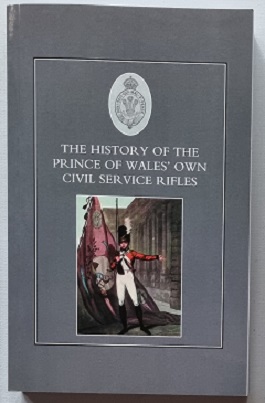Description
Title: A Short History of XX The Lancashire Fusiliers
Author: Surtees, Major-General George
Condition: Good
Edition: 1st Edition
Publication Date: 1955
ISBN: N/A
Cover: Soft Cover without Dust Jacket – 245 pages
Comments: The history of the The Lancashire Fusiliers up to 1955.
The Lancashire Fusiliers was a British infantry regiment that was amalgamated with other Fusilier regiments in 1968 to form the Royal Regiment of Fusiliers.
The regiment was formed in 1688 in Devon under Sir Richard Peyton as Peyton’s Regiment of Foot. The regiment’s name changed according to the name of the colonel commanding until 1751, when it became the 20th Regiment of Foot.
The regiment served in the Glorious Revolution under King William III and at the Battle of the Boyne in July 1690 and Aughrim in 1691. During the War of Spanish Succession (1701–1714), it aided in the capture of Spanish galleons at Battle of Vigo Bay in 1702. The regiment distinguished itself at the Battle of Dettingen in June 1743, and at Fontenoy in May 1745, and served in the Battle of Culloden in April 1746.
During the Seven Years’ War the regiment earned honour at the Battle of Minden on 1 August 1759, when, as an infantry formation, they stood up to and broke a French cavalry charge. The regiment was sent to Quebec in April 1776 and assisted in the relief of Quebec in May 1776. Serving under General John Burgoyne for the remainder of the Canadian campaign, they later surrendered along with General Burgoyne at Saratoga.
The 20th Foot at the Battle of Inkerman, by David Rowlands
During the Napoleonic Wars the Lancashire Fusiliers fought in several early campaigns before serving with distinction in the Peninsular War, their performance was particularly noted at the Battle of Vittoria where they formed part of the “backbone” of the Duke of Wellington’s forces. During the Crimean War, in 1854, they took part in the two major battles of Alma and Inkerman and in 1885 the regiment fought in the siege of Khartoum in the first Anglo-Sudanese campaign.
At the main landings at Gallipoli on 25 April 1915, six Victoria Crosses were awarded to 1st Battalion Lancashire Fusiliers. This is sometimes referred to as ‘the six VCs before breakfast’.
The landing in Gallipoli (at the infamous Helles landing) involved a brigade from the 42nd (East Lancashire) Division that had four territorial battalions from the regiment. The landings also involved the 1st Battalion.
A subsequent landing further north at Suvla Bay took place on the night of 6th/7th August. 9th Battalion Lancashire Fusiliers as part of 34 Brigade 11th Division waded ashore in deep water and darkness and were pinned down on the beach losing their CO and a number of officers.
A service of commemoration has been held in the regimental town, Bury in Lancashire every Gallipoli Sunday, the nearest Sunday to 25 April, since 1916. It has recently been decided that this commemoration will continue despite the death of the last survivor of the Lancashire Fusiliers who was present at Gallipoli.
The regiment, like most British regiments in the war, sent the majority of its battalions to the Western Front. During the Battle of the Somme there were eleven battalions of the regiment that saw action in the campaign including three Pals battalions (The Salford Pals) and three Bantam battalions.
The famous fantasy author J. R. R. Tolkien served in this regiment from 1915 until contracting “trench fever” during the Battle of the Somme in October 1916.
The Lancashire Fusiliers raised seventeen battalions for service in the Second World War. During Battle of France, the 1/8 Battalion, Lancashire Fusiliers, along with battalions of the Royal Norfolks and the Royal Scots, were overrun on 26–27 May 1940 around the village of Locon, 2 kilometres north of Bethune by advancing German troops. Several massacres of Allied prisoners took place shortly thereafter, primarily by the German SS Totenkopf Division.
Some wear and tear at the spine else in good condition.




